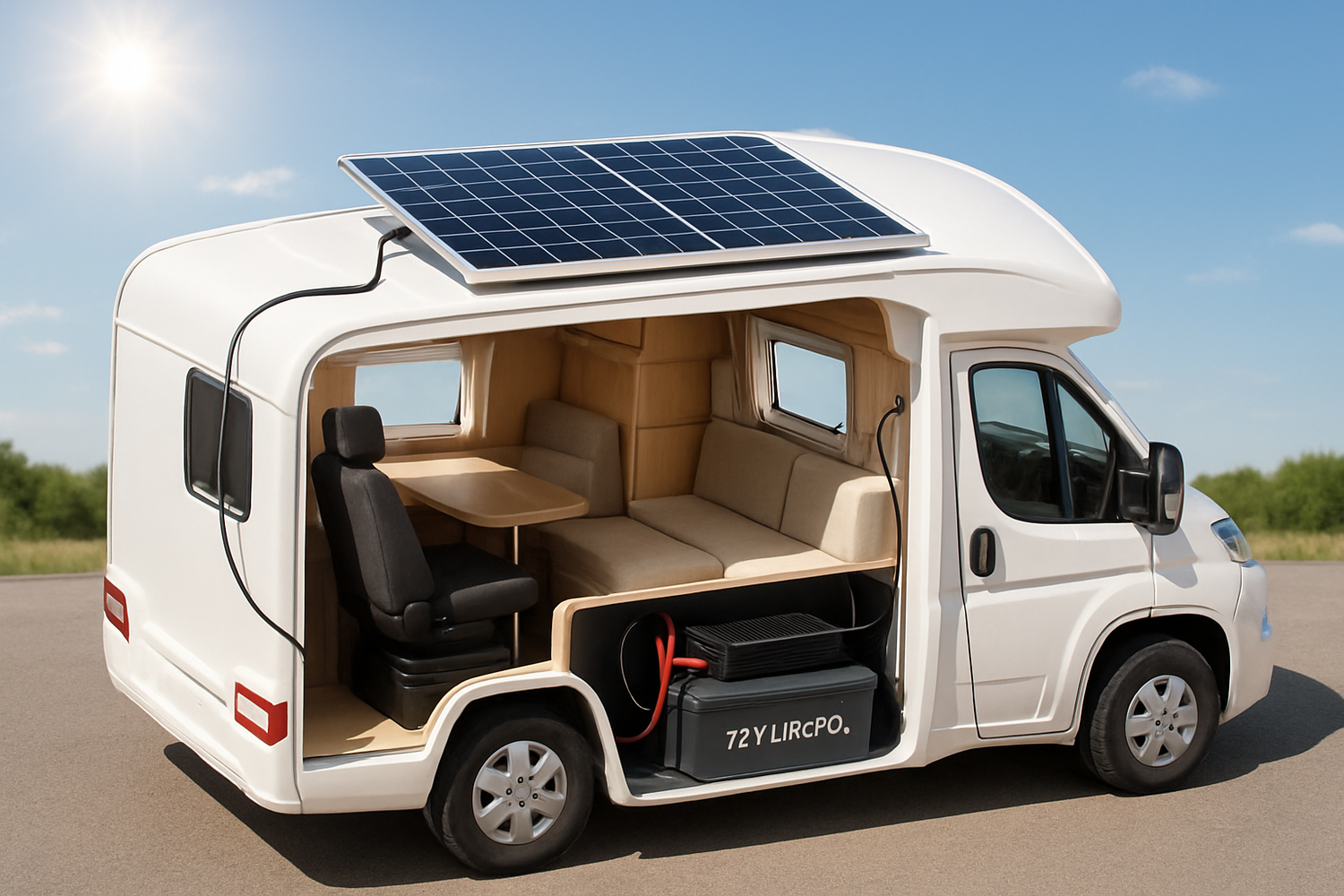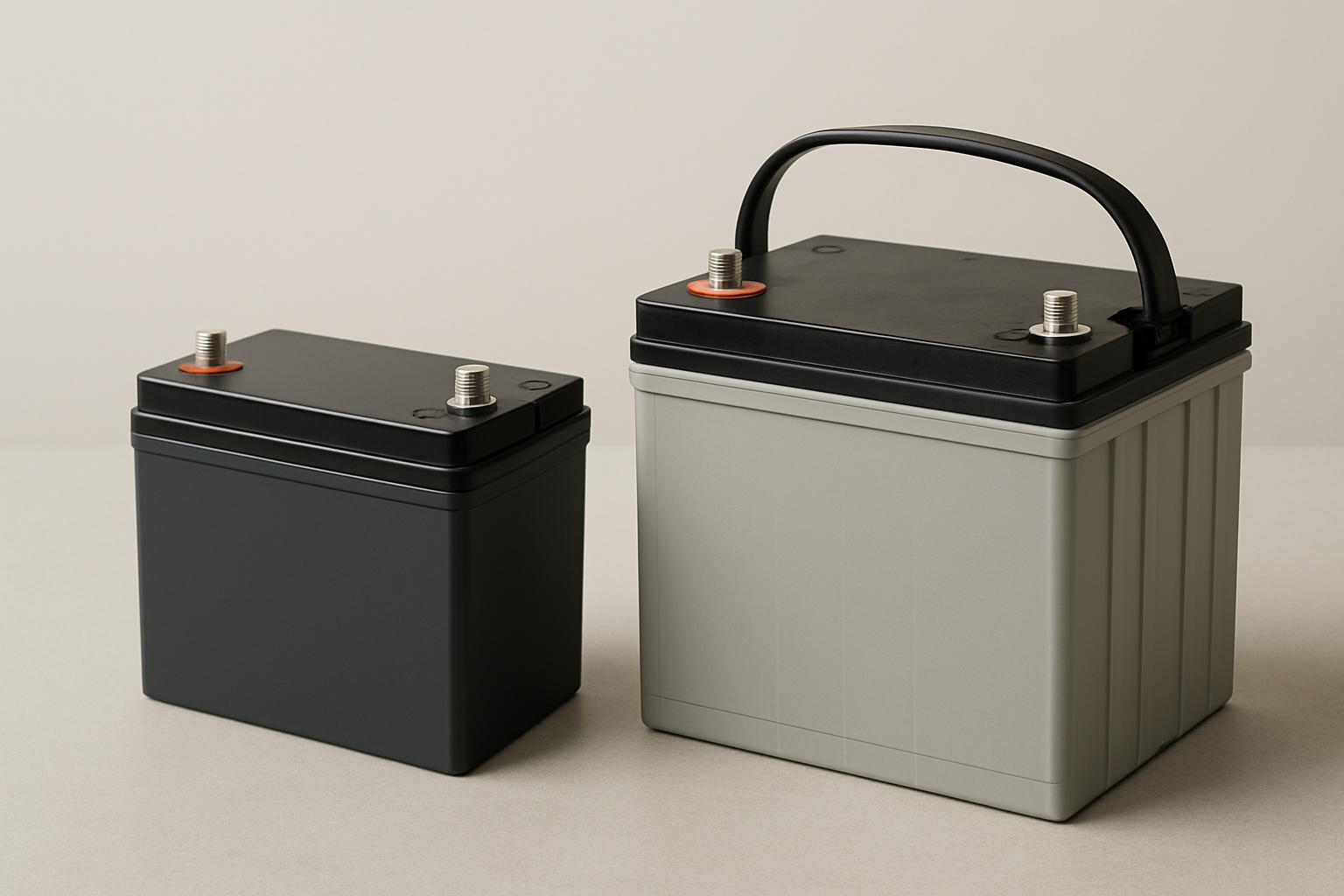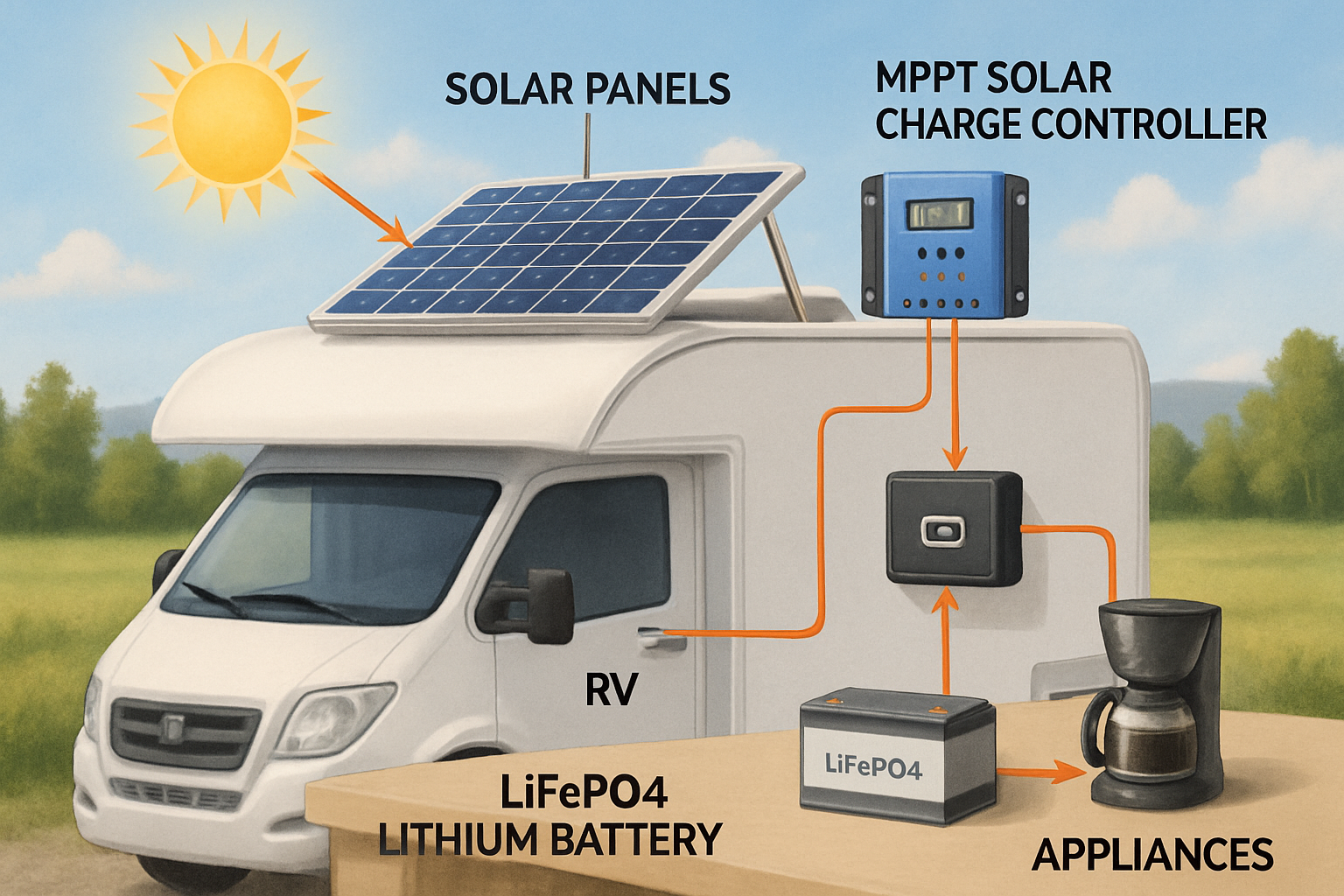Powering an RV with solar energy provides unparalleled freedom to travel and explore without relying on shore power. At the heart of any effective RV solar power system is the battery bank, and 12V LiFePO4 (Lithium Iron Phosphate) batteries have emerged as the premier choice for energy storage. Their advanced technology offers significant advantages in performance, lifespan, and reliability, making them a cornerstone of modern off-grid power solutions.
Understanding 12V LiFePO4 Batteries for RVs
Choosing the right battery is critical for a successful RV solar charging setup. LiFePO4 chemistry represents a major leap forward from traditional battery types, offering a combination of power, safety, and longevity perfectly suited for the demands of mobile living.
What Sets LiFePO4 Apart?
Unlike conventional lead-acid batteries, LiFePO4 batteries use a different chemistry that provides superior stability and performance. They are lighter, more efficient, and last substantially longer, making them a smart investment for serious RV enthusiasts. The technology's inherent safety is a key benefit; LiFePO4 batteries have high thermal stability, reducing the risks associated with overheating. According to the International Renewable Energy Agency (IRENA), electricity storage is a prominent solution to address the challenges of integrating variable renewables like solar, and advanced battery chemistries are central to this transition. This principle applies directly to mobile applications like RVs, where reliability is paramount. A study highlighted in Electricity Storage Valuation Framework emphasizes how effective storage makes renewable energy more dependable.
| Feature | LiFePO4 Battery | Lead-Acid (AGM) Battery |
|---|---|---|
| Cycle Life | 3,000 – 7,000+ cycles | 300 – 1,000 cycles |
| Depth of Discharge (DoD) | 80-100% | 50% |
| Weight | 50-60% lighter | Heavier |
| Efficiency | ~95% | ~80-85% |
| Maintenance | None required | Periodic checks needed |
Key Technical Specifications Explained
When selecting a 12V LiFePO4 battery, several specifications are important:
- Capacity (Ah): Amp-hours measure the total energy a battery can store. A 100Ah battery can deliver 100 amps for one hour, or 10 amps for 10 hours.
- Depth of Discharge (DoD): This refers to the percentage of the battery's capacity that can be safely used. LiFePO4 batteries can handle a deep discharge of 80-100% without significant degradation, whereas lead-acid batteries should not be discharged beyond 50%. This means a 100Ah LiFePO4 battery provides nearly double the usable energy of a 100Ah lead-acid battery.
- Cycle Life: A cycle is one full charge and discharge. The cycle life of a LiFePO4 battery is directly related to its DoD; shallower discharges lead to a longer lifespan. Even at high DoD, they offer thousands of cycles, far surpassing lead-acid alternatives.
- Battery Management System (BMS): An integrated BMS is a crucial safety feature. It protects the battery from overcharging, over-discharging, overheating, and short circuits, ensuring safe and reliable operation.
Integrating LiFePO4 Batteries with Your RV Solar Power System
A complete RV solar power system involves several components working together. Proper integration ensures that your LiFePO4 battery charges efficiently and delivers consistent power to your appliances.
Sizing Your Battery Bank Correctly
To determine the right battery capacity, you must first calculate your daily energy consumption.
- Conduct an Energy Audit: List all the DC and AC appliances you plan to use, from lights and fans to refrigerators and electronics. Note their power consumption in watts and estimate the number of hours you'll use each per day.
- Calculate Daily Watt-Hours (Wh): Multiply each appliance's wattage by its daily hours of use to find its daily Wh consumption. Sum these values to get your total daily energy need.
- Convert to Amp-Hours (Ah): Divide your total daily Watt-hours by the system voltage (12V) to find the total Amp-hours required per day. For example, a daily need of 1200Wh translates to 100Ah (1200Wh / 12V).
- Plan for Autonomy: Consider how many days you want to be able to operate without any solar input (e.g., during cloudy weather). Multiply your daily Ah requirement by the number of desired autonomy days to get your total required battery capacity.
Essential Components for a LiFePO4 Setup
An efficient RV solar charging system requires more than just panels and a battery. Each component plays a vital role:
- Solar Panels: Monocrystalline panels are generally more efficient and perform better in low-light conditions compared to polycrystalline panels, making them a popular choice for RVs where space is limited.
- Solar Charge Controller: This device regulates the power flowing from the solar panels to the battery. A Maximum Power Point Tracking (MPPT) controller is highly recommended for LiFePO4 batteries. It is significantly more efficient (up to 95%+) than a Pulse Width Modulation (PWM) controller, converting excess panel voltage into additional charging current. This is especially beneficial in changing light conditions.
- Inverter: An inverter converts 12V DC power from your batteries into 120V AC power for household appliances. A pure sine wave inverter is recommended to safely power sensitive electronics like laptops and TVs.
Installation and Maintenance Best Practices
Proper installation and minimal maintenance will ensure your RV solar power system operates safely and effectively for years to come.
Safe Installation Procedures
Installing an electrical system requires care and attention to detail. Ensure all components are securely mounted in a location with adequate ventilation. Use correctly sized wiring to handle the current, and install fuses and circuit breakers for overcurrent protection. If you are not comfortable with electrical work, seeking professional installation is the safest option.
Long-Term Care and Maintenance
One of the most significant benefits of a 12V LiFePO4 battery is that it is virtually maintenance-free. Unlike flooded lead-acid batteries, there is no need to check water levels. Long-term care involves simple steps:
- Check Connections: Periodically inspect all electrical connections to ensure they are tight and free of corrosion.
- Monitor Performance: Use a battery monitor to keep track of your battery's state of charge and overall health. Many LiFePO4 batteries include Bluetooth monitoring capabilities.
- Proper Storage: If you store your RV for an extended period, it's best to keep the battery at a 50-60% state of charge in a cool, dry place.
Maximizing Performance and Lifespan
An RV solar power system is a long-term investment. Optimizing its performance ensures you get the most value and reliability from your setup. As noted in research from the U.S. Department of Energy, technologies that optimize power flow, such as advanced DC-DC converters, can significantly increase energy production and system efficiency. The principles in the EERE Success Story—How Power Optimization Technology Research Built a Successful U.S. Business show how controlling power at each stage enhances overall output.
Understanding system efficiency is key. For a deeper dive into performance metrics, a valuable resource on solar storage performance provides detailed benchmarks and data that can help you set realistic expectations for your system's output. By managing factors like panel cleanliness and avoiding deep discharges when possible, you can extend the battery's already long life.
A Reliable Foundation for Energy Independence
Upgrading to a 12V LiFePO4 battery is one of the most impactful improvements you can make to an RV solar charging system. Its superior cycle life, high efficiency, usable capacity, and inherent safety provide a dependable power source for all your adventures. By correctly sizing your system and using compatible components, you can build a robust and long-lasting solution that delivers true energy independence on the road.
Frequently Asked Questions
Can I replace my lead-acid RV battery directly with a LiFePO4 battery?
While a LiFePO4 battery can often fit in the same space, a direct swap is not always advisable. You should ensure your RV's converter or charger has a specific lithium charging profile. Upgrading to an MPPT solar charge controller is also highly recommended to maximize charging efficiency and protect the battery.
How long does a 12V LiFePO4 battery last in an RV?
With a cycle life ranging from 3,000 to over 7,000 cycles, a LiFePO4 battery can last for 10 years or more with proper use. This is significantly longer than the typical 2-3 year lifespan of a traditional lead-acid battery.
Are LiFePO4 batteries safe for RVs?
Yes, LiFePO4 batteries are considered one of the safest lithium battery chemistries. Their chemical structure is highly stable and resistant to thermal runaway. Furthermore, the integrated Battery Management System (BMS) provides critical protection against common electrical faults, making them a very safe choice for an RV environment.





Leave a comment
All comments are moderated before being published.
This site is protected by hCaptcha and the hCaptcha Privacy Policy and Terms of Service apply.